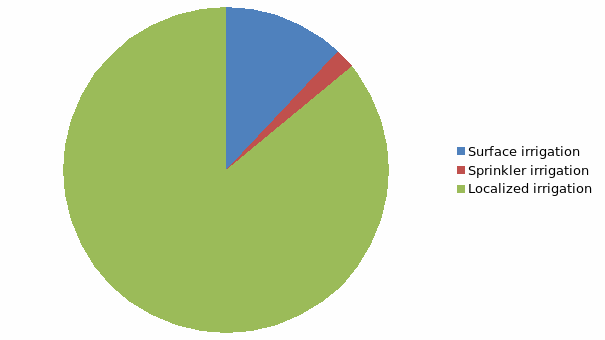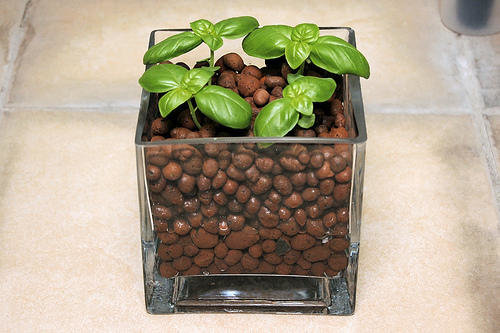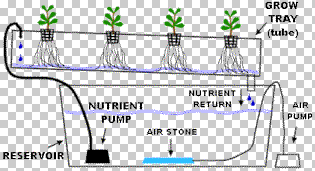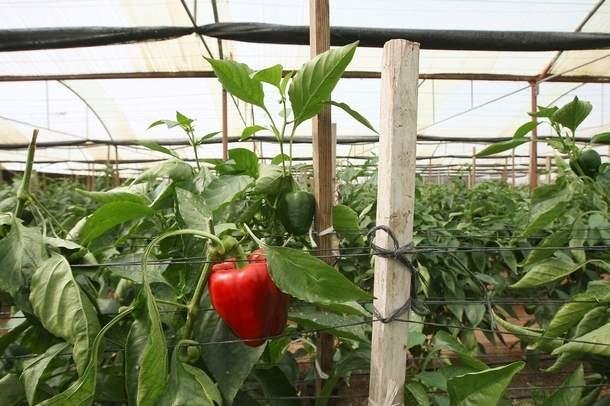Agriculture and water usage in agriculture in Abu Dhabi city
Agriculture refers to a scientific discipline that entails cultivation of plants, animal rearing as well as cultivation of fungi (Sabin & Veno, 2008). In Abu Dhabi, the existing soil types have been subjected to arid and semi-arid conditions.
This implies that the prevailing climatic condition is hyper arid in Abu Dhabi city. The City receives minimal rainfall of less than 100mm per annum (Mohamed et al., 2008).
The climatic conditions dictate that the agronomic practices carried out in Abu Dhabi must employ high technology and adequate water. These factors are applied to sustain the environment while maximizing the yields.
In Abu Dhabi, the use of water to sustain crops and operate animal husbandry is evident. The crops produced by the farms include date palms, vegetable crops, and fodder crops (Food and Agricultural Organization Report 34, 2009).
Therefore, the crops and animals should be produced using water from sources to supplement the little rainfall.
The sources of water used in agriculture include:
- The conventional resources such as rainfall, ponds, springs and even groundwater.
- The non-conventional water resources such as water obtained from the treated waste water and desalinization (Mohamed et al., 2008).
Since water to boost irrigation is available, it is clear that various methods of agriculture can be supported in Abu Dhabi.
These ecologically sound methods of farming include irrigation, and hydroponics among others (Manson, 2003). The water used in agricultural farms is spent in the drip, furrow, sprinkler, and bubbler irrigation (Mohamed, 2011).
In as much as water is also used in agricultural farms, a high population of people residing in Abu Dhabi depends on it. Consequently, the government has formulated strategies to guide the water usage (Abu Dhabi Water Resources Master Plan, 2009).
The challenges in the implementation of these strategies by the government are aimed at regulating the water usage.
Statistics of water and land usage in Abu Dhabi for agriculture
In Abu Dhabi, the available water is consumed in a cost-effective manner. According to the Food and Agricultural Organization Report 34 (FAO), all the crops grown in Abu Dhabi are irrigated (Food and Agricultural Organization Report 34, 2009).
The water used in the agricultural farms is consumed mainly in the three major methods of irrigation: surface irrigation, sprinkler irrigation, and localized irrigation (Food and Agricultural Organization Report 34, 2009).
The figure below shows the irrigation methods that consume water in Abu Dhabi City:
Figure 1.1

The irrigation farming in Abu Dhabi is used to produce crops like the palm trees, vegetables and the green fodder. However, there are other crops that are also produced include the short season vegetables, Rhodes grass as well as the dates (Food and Agricultural Organization Report 34, 2009).
A report by the Abu Dhabi Food Control Authority (2014) indicates that the agricultural sector used 70% of the total annual water that was budgeted for by the UAE in the year 2013.
The large figure (70%) was attributed to the production of crops like the Rhodes grass, which was approximated to be around 93 million gallon. This high consumption of water by the Rhodes grass led to its abandonment.
Therefore, the authority has formulated certain strategies to ensure that water is consumed in a cost-effective manner through implementation of the best irrigation techniques such as drip irrigation (Abu Dhabi Food Control Authority, 2014).
However, there are no clear statistics showing the daily consumption of water in agriculture. Therefore, there is a need to develop the high-technology farming that consumes less water while maximizing output.
The total area of Abu Dhabi Emirate is 67,340 Km2. Agricultural farms occupy a total 218,590 ha of this total land (, 2009). This total land used for agriculture has the following usage in regard to irrigation farming.
Figure 1.2.1(a)
The data was obtained from Food and Agricultural Organization Report 34 (2009).
The agricultural farms have also been divided as follows:
Figure 1.2.1 (b)
Data obtained from FAO Report 34 (2009)
Conclusively, the complete area of land that has been subjected into agricultural use in Abu Dhabi is 75,000 hectares, giving a total number of farms as 24,000 that spends up to 50% of the entire water consumed in UAE (Alaa, 2014).
Overview of Hydroponics techniques
According to Benton (2004), hydroponics can be described as an agricultural practice that entails growing of plants deprived of soil while minerals and other nutrients are provided in water.
In a hydroponics system, plants are grown in nutrient solutions, and there is the use of artificial substrates such as sawdust (Venter, 2010).
The crops grown in the hydroponics system include cabbages, spinach, cucumber, tomatoes, potatoes and strawberries. In some cases, there is no use of the artificial substrates (Benton, 2004).
The basis of all the techniques applied in hydroponics is aimed at ensuring that the plants develop roots enabling them to search for water in the system.
Therefore, water, air and the required nutrients are enhanced in the zones of the roots (Venter, 2010). The plants will in turn grow as they are supported by the available nutrients mixed in the water.
Hydroponics techniques are divided into two broad and basic groups: the active technique (closed system) and the passive technique (open system) (Peckenpaugh, 2004). The active method is where the nutrients provided in solution form are atomized along the crop roots.
On the other hand, the passive system uses stagnant nutrient solutions where the plants are forced to absorb what they require for growth (Peckenpaugh, 2004). It has been established that the choice of any technique is dependent on the purpose of the plants to grow.
For example, in production of plants in small scale, the passive technique is preferred over active technique (Kirakosyan & Kaufman, 2009).
The passive techniques include the following:
- Semi-hydroponics. This technique falls between two systems, irrigation and hydroponics. The nutrients absorbed in water reach the roots in a soil pot that is hung above the nutrient solution in a container through capillarity (Peckenpaugh, 2004).
- Deep water Culture. This is the use of stagnant nutrient solution without the use of the artificial substrates (Peckenpaugh, 2004).
- Use of stagnant nutrient solution where the crop roots are placed in a permeable substrate that is inactive to supply the food requirement of the plants. This technique is used mostly for house plants (Peckenpaugh, 2004).

Picture 1.3 (b): Stagnant nutrient solution placed in the container.
The other technique that is also applied is the active technique. Active technique uses nutrient solution that is usually enhanced by a pump to reach the plant roots. This technique has been widely used in large-scale farming such as the production of horticultural crops (Peckenpaugh, 2004). The methods employed in active technique include (Peckenpaugh, 2004):
- Ultraponics. The most recent technique that employs the use of ultrasonic atomizer to avail the nutrient solution to the roots of the plants (Peckenpaugh, 2004).
- Aeroponics. The roots are usually suspended in the growth chamber, and the nutrient solutions are sprayed continuously on the plant roots (Peckenpaugh, 2004).
- Bubbleponics. The nutrient solution to the plant roots at regular intervals.
- Drip system. Drippers are used to avail the solution containing nutrients to the plant roots where each plant is allocated one dripper in this system. Other methods include continuous flow system, run to waste system, and the Ebb and flow system (Venter, 2010).
Advantages and disadvantages of the hydroponics techniques
There are more advantages associated with this type of farming than the disadvantages (Venter, 2010). The several advantages that the hydroponics techniques offer include:
- The use of hydroponics systems in the production of plants allows for the cultivation of the crops in all seasons of the year when using greenhouses.
- The crops produced in hydroponics systems are cleaner, highly nutritious, and healthier when consumed than those from other agricultural methods.
- There are low chances of crop failure compared to other systems of farming implying that there is usual consistency in production of the crops.
- The techniques employed in the growth of plants are usually environmental friendly.
- There is usually easy optimization of the genetic potentials of the plants grown in the hydroponics systems.
- There are usually maximum crop yields and the maturities of the plants are faster than the plants grown in the fields (Venter, 2010).
- The techniques involved in the hydroponics can easily overcome pests and diseases.
- Less water is consumed, and no soil is also required for the growth of the plants.
- Since the nutrients provided to the plants are closely monitored, and there is no use of herbicides and pesticides, the crops produced under this system are of high quality, and do not pose any threat to human health (Kirakosyan & Kaufman, 2009; Venter, 2010).
However, there are disadvantages associated with various hydroponics systems. These include:
- To set up any of the hydroponics units, there is usual high cost that must be incurred (Venter, 2010).
- The labor that is usually required in maintenance of the hydroponics system is intensive since there is no mechanization as compared to the crops grown in the fields (Venter, 2010).
- The water culture method is always susceptible to water logging in cases where the film of the nutrients is very deep (Venter, 2010).
- In the event of pump failures in any system that uses the pump, the result will be wilting of the plants since the roots will dry very fast (Venter, 2010).
- All the hydroponics systems require close and constant monitor of the pH levels, hence require more human labor (Kirakosyan & Kaufman, 2009; Venter, 2010).
Therefore, the most suitable agricultural method that suits the environment prevailing in the City is hydroponics since the desert environment necessitates the use of little water (Kirakosyan & Kaufman, 2009). The use of artificial substrates instead of soil offers the best alternative for the dry land in Abu Dhabi.
Case study in Hydroponics application
Over years, hydroponics has realized positive attention from various countries. The history of hydroponics can be traced back in early 1660s (Resh, 2012). The success in the development of hydroponics is attributed to the development of plastics (Resh, 2012).
At the present, hydroponics is widely practiced by the greenhouse growers of crops, either in large-scale or small-scale cultivation (Resh, 2012). The shift to the adoption of hydroponics has been due to the high yield, less water required and even no soil that is used in the production of the plants.
In Abu Dhabi, hydroponics has been given more attention as it provides an alternative food source. The hydroponics application initiative was officially launched in Abu Dhabi on 27/02/2014 (Boost for hydroponics in UAE, 2014).
This was aimed at modernizing agricultural practices that will in turn boost the crop yields in the City. Through the hydroponics applications in Abu Dhabi, there will be conservation of the irrigation water, estimated at 70%.
The production of the crops through these strategies was also set to realize that the production of the crops improves by approximately 10 fold compared to the crops in the open agricultural fields (Boost for hydroponics in UAE, 2014).
The application of hydroponics in Abu Dhabi was reported by Wadham, (2008), to be on the rise in Abu Dhabi. Wadham (2008) added that the hydroponics farms in Abu Dhabi use the hydroponics technology in the area of 1000m2.
People prefer this technique as it saves the limited water available for irrigation. The hydroponics farms in Abu Dhabi produce plants like herbs, cucumbers, peppers, strawberries and even lettuce (Wadham, 2008).
Growing techniques
The techniques that have been used to grow crops hydroponically include closed system and the open system. In Abu Dhabi, the techniques used frequently include the open and closed hydroponics systems (Mamta & Shraddha, 2013).
The crops are grown according to these techniques depending on their uses. For example, the closed system is preferred for large-scale cultivation.
In the closed system of hydroponic cultivation, the roots of plants are dipped within culture solutions to utilize the availed food complements within them.
Consequently, the roots absorb the nutrients and water using capillarity (Resh, 2012). The methods employed under the closed system in Abu Dhabi include the nutrient film technique (NFT) and the deep flow technique (DFT) (Mamta & Shraddha, 2013).
In the closed system technique, the nutrient solution is provided to the plants through the application of a siphon to supply food requirements along the roots.
In the open system of hydroponics cultivation, the nutrients are usually static. These are the methods applied in Abu Dhabi:
- The floating technique
- The Root dipping method
- The capillary action technique (Mamta & Shraddha, 2013).
For the plants to grow in the hydroponics, they require the presence of some specific substances. Some of the requirements include light, air, water, nutrients, and suitable climate (Venter 2010). Therefore, the growing techniques must provide the five basic requirements for the plants to grow in the systems. The following techniques have been found suitable for growth of plants in Abu Dhabi:
- Growing of plants in a static nutrient solution without the use of a substrate (Mamta & Shraddha, 2013). In this system, also known as water culture, crops are usually cultivated in a fully aerated solution with balanced nutrients that promotes growth of the crops (Venter, 2010).
- Substrate culture (Mamta & Shraddha, 2013). In this method, the crops are grown in solid substrates that support the crops. The substrates can either be organic or inorganic (Venter, 2010).
- The drip system of hydroponics cultivation (Mamta & Shraddha, 2013).
- Aeroponics system which is a modernized technique (Mamta & Shraddha, 2013). In this method, plants are grown in a system where the roots are kept in the dark, which eventually hang in controlled humid conditions (Venter, 201). The well-balanced nutrients are sprayed daily. The roots are regularly supplied with the required nutrients for the plant growth (Venter, 2010).
Substrates (mediums)
The crops grown in the hydroponics systems are the major determinants of the substrates to be used (Venter, 2010).
The substrates used in the systems include the organic substrates and the inorganic substrates. Organic substrates include the substrates obtained from the living organisms such as tree’s products. The inorganic substrates are usually obtained from the materials from nature such as sand (Venter, 2010).
The substrate requirements are influenced by following factors:
- Should be free from pests and diseases (Venter, 2010).
- Should be stable both chemically and biologically during the entire period of the crop cultivation (Venter, 2010).
- Should have a lower mass (Venter, 2010).
Organic substrates include the following substances:
- The tree products- are always preferred due to their high suitability. These products are sawdust, wood chips, the wood shavings, charcoal and the wood fiber (Venter, 2010).
- Coconut products have also been used as organic substrates. The coconut fibers and charcoal are always preferred because they provide high productions of the crops. In Abu Dhabi, the coconut fiber is selected due to the oxygen available in it as well as its ability to hold water over a long period of time compared to other organic substrates (Peckenpaugh, 2004). Coconut shell charcoal and peat are also used but their preference is limited to countries where coconut exists (Harris, 1988). The peat is good and mostly possesses high capability to hold water for a long period of time (Venter, 2010).
- Other organic substrates that have been used to grow crops in hydroponics include the rice hulls, hay and straw bales.
Aeration (air pump)
Aeration is typically important in all agricultural practices. Air is usually required for the survival of the microorganisms that live within the roots of plants (Perschbacher, 2010).
In hydroponics systems, aeration is carried out through air pumps (Nicholls, 1990). The medium in the hydroponics systems should be well aerated as the crops require the air for their growth.
Air pumps are employed in the NFT systems (Venter, 2010).

Figure 1.4: illustration of a hydroponics system (Mission 2015-Biodiversity, 2014)
The target air component that is aimed at its incorporation into the nutrient system is oxygen (Nicholls, 1990). Nicholls (1990) stated that for efficient pumping of enough oxygen into the medium, the temperature of the system should be regulated.
The pumping of air helps in the respiration of plants, which is important for the plant’s development (Perschbacher, 2010). When the oxygen level reduces in the medium, the plants tend to suffer from stress, and wilting (Perschbacher, 2010).
The air pumps should be fitted and maintained effectively as the failure of the air pumps can lead to the plants’ low rates of photosynthesis and respiration.
The usual outcomes are stunted growth, drying of the plants, collapsing of cells due insufficient mineral available to the plants, or even death of the plants (Perschbacher, 2010).
Air pumping has also been established to control crop infections such as that caused by Pythium pathogen that accumulates when the medium is starved of oxygen (Morgan, 2008).
Statistics
Several researches have been carried out to give clear statistics on the hydroponics application on agriculture in Abu Dhabi. The available data indicates success in the development of the hydroponics farming in the Abu Dhabi City.
Harvest quality
The harvest quality of the crops that have been grown under the hydroponics system has been considered as the advantages of hydroponics over other methods of farming (Nicholls, 1990). In every country where hydroponics has been practiced, the yield of crops has been increased.
The yield is also considered in terms of the quality of the crops harvested from the hydroponics systems. For example, production of the vegetable crops is normally important with high economic value when the quality of the harvests is elevated.
Considering the advancements and the priorities given to hydroponics in Abu Dhabi, the quality of the yields has also increased.
In Abu Dhabi, the data recorded on the harvests indicates that hydroponics gives five times yield of crops than those grown in the open fields (Mission 2015-Biodiversity, 2014). The quality of harvests is high due to the following reasons:
- The plants that grow in hydroponics are healthier than those that grow in the open fields.
- There is no disease or pest attack to the crops.
- There is little or no contamination of the crops as is common in the plants grown in the open field which are susceptible to soil contaminations.
- There is no use of pesticides or herbicides meaning that the crops are subject to be harvested when of high quality.
Table 1.5.1: table showing the production of vegetable crops through hydroponics in Abu Dhabi.
Mineral micro-nutrient solutions used (harvest classification)
The micro-nutrients solutions normally supplied to the plants determine the harvest of the crops (Mamta & Shraddha, 2013). The sources of the mineral micro-nutrients in the hydroponics are shown in the table below:
Table 1.5.2 the micro-nutrient solutions used in hydroponics (Mamta & Shraddha, 2013).
Commercial
Marketing of the crops yields from the hydroponics has been considered as one of the booming commercial activities in most countries (Mason, 2011). For example, Abu Dhabi depends on the sale of crops which are of high yield compared to the neighboring countries (Knutson, 2000).

Picture 1.5.3 Commercial hydroponics system (The national: Boost for hydroponic farming in the UAE, 2014)
The commercial hydroponics farms used in Abu Dhabi are about 87 in total (Todorova, 2014).
Technical application of Hydroponics in Palm trees
Growing of palm trees has recently received a boost through the advancements in hydroponics. According to Berzins, Snell, Richter (2008), palm trees are grown using the waste nutrients obtained from the hydroponics systems.
However, research indicates that the palm trees can be grown in the pots used for hydroponics (Knutson, 2000). In most cases, the palm trees grown in the hydroponics are left to develop from the roots then transplanted to the open field (Nicholls, 1990).
References
Abu Dhabi Food Control Authority. (2014). Web.
Abu Dhabi Water Resources Master Plan. (2009). Web.
Alaa, J. (2014). Current and future plans of using TWW in agricultural production Abu Dhabi Emirate. Web.
Benton, J. (2004). Hydroponics: A Practical Guide for the Soilless Grower. Boca Raton, Fla.: CRC Press. Web.
Berzins, R., Snell, H., Richter, C. (2008). Technical application of Hydroponics in Palm trees. Markham, Canada: Otto Richter and Sons limited.
Boost for hydroponics in UAE. (2014). Web.
The national: Boost for hydroponic farming in the UAE. (2014). Web.
Food and Agricultural Organization Report 34. (2009). Web.
Harris, D. (1988). Hydroponics: The complete guide to gardening without soil: a practical handbook for beginners, hobbyists and commercial growers. London: New Holland Publishers.
Kirakosyan, A., & Kaufman, P. (2009). Recent advances in plant biotechnology. Dordrecht: Springer.
Knutson, A. (2000). The best of the growing edge 2: Popular hydroponics and gardening for small-commercial growers and hobbyists. Corvallis, OR: New Moon Pub.
Mamta, D., & Shraddha, V. (2013). A Review on Plant without Soil- Hydroponics. Web.
Mason, J. (2003). Sustainable Agriculture. Collingwood, Vic: CSIRO.
Mason, J. (2011). Commercial hydroponics. Gold Coast: ACS Distance Education.
Mission 2015-Biodiversity. (2014). Web.
Mohamed, D., Mohsen , S., Jaber, J., Mustafa, L., Ahmed, M., & Ismael, A. (2008). Environment Agency-Abu Dhabi. Rob Barnes: Abu Dhabi.
Mohamed, M. (2011). UAE State of the Water Report. Web.
Morgan, L. (2008). Hydroponic tomato crop production. Tokomaru, N.Z.: Suntec.
Nicholls, R. (1990). Beginning hydroponics: Soilless gardening : a beginner’s guide to growing vegetables, house plants, flowers, and herbs without soil. Philadelphia, PA: Running Press.
Peckenpaugh, D., (2004). Hydroponic solutions. Corvallis, OR: New Moon Pub.
Perschbacher, P. (2010). Recirculation-aeration: bibliography for aquaculture. Beltsville, Md.: National Agricultural Library.
Resh, H. (2012). Hydroponic food production: A definitive guidebook for the advanced home gardener and the commercial hydroponic grower (6th ed.). Boca Raton, Fla.: CRC Press.
Sabin, L., & Veno, J. (2008). Agriculture. Mahwah, N.J: Troll Associates.
Venter, G. (2010). Successful hydroponics: 21st century technology for commercial and home applications : a comprehensive practical guide to scientifically based hydroponic crop production. Dartford, UK: Xlibris Corp.
Wadham, J. (2008). Hydropononics: a little water goes a long way, and that makes sense for UAE. Web.